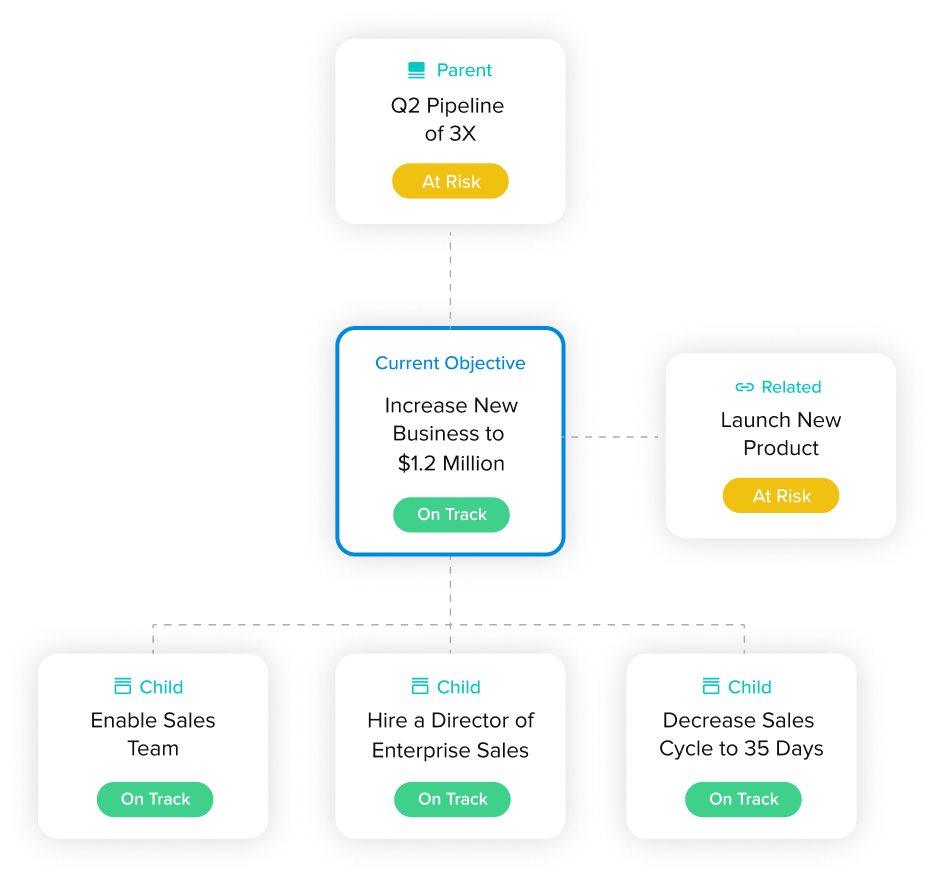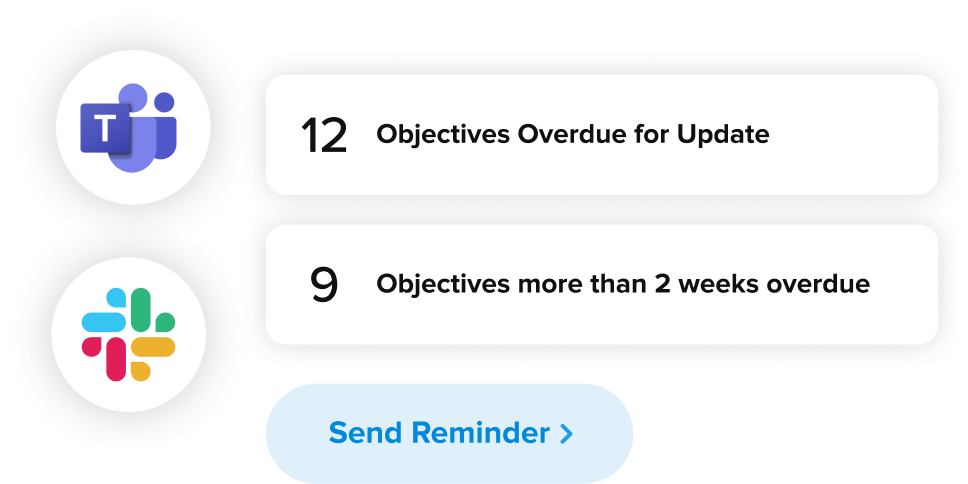The term "OKR" ought to be something every professional should know, certainly every tech professional. That said, if you are new to the Internet world and just getting started expanding your online presence, then OKR metrics may be new to you. But they are incredibly important, to get an idea of that, consider this: The OKR methodology has arguably been the counterpoint methodology upon which tech giants Google and others owe their success.
Interested now? We hope so. OKR metrics are a wonderful tool every business should have in their arsenal. But what is OKR? The OKR acronym stands for Objectives and Key Results. What OKRs are were originally created by Intel CEO Andy Grove back in the 1970s, but he taught them to investor and venture capitalist John Doerr who then formalized the OKR structure and gave it its now acronym when writing the New York Times best-seller Measure What Matters. That book introduced OKR Google and Google's success undoubtedly is what made the OKR framework even more popular.
The OKR framework is so addicting to big tech companies because the OKR methodology enables a collaborative, goal-setting framework that can feel inherently right to developers and tech-oriented individuals. This OKR framework encourages teams and organizations to meet and exceed their goals and to do so with easily identifiable and measurable results. And if there is something techie people love it is data -- hard data that can be analyzed, measured, and built from.
The OKR framework starts with goal-setting. Here, an individual, a team, and an organization completes the following sentence:
I will ___________________ as measured by _______________.
As you can see, from the very onset, you are only creating OKRs that have OKR metrics. If you cannot measure it, it cannot be listed within the OKR framework. In other words, one must answer the following:
I will complete X objective as measured by X set of key results
Here, objectives are the qualitative descriptions of what a team or organization wants to achieve. Key results are the OKR metrics that can measure the results.
For example, if a company's objective is to improve their customer experience, then they must find ways to measure whether or not they succeed as they implement strategies to obtain that objective. Some tangible ideas for OKR metrics might include goals of increasing the repurchase rate from current to the desired number while simultaneously maintaining customer acquisition cost. This means that the company isn't spending extra money to try and bribe good results but is instead working on the person-to-person and product-delivery positives of increasing customer acquisition. And tangibly seeing at the end whether it was effective by checking the repurchase rate.
The OKR Meaning
Before we get too bogged into the technical, let's go back over that OKR meaning. OKR stands for Objectives and Key Results. The OKRs of Google are a bit different but not so much different from what Grove started off with back at Intel. But Grove's original Silicon Valley terminology was a bit too technical and thus Doerr simplified it into terms that were more readily accessible by those within the tech industry and those without.
Really, once you understand the acronym of OKR, you can understand it all. You have the Objectives which are the goals for which Key Results are the measurements used to determine whether or not those goals were met.
When choosing or defining objectives for OKRs, do not go for something vague or something unobtainable in the near future. Here, in the beginning, at least, objectives should set out at the start of every quarter with key goals done by the end. Objectives made via OKRs should be realistic, but they should also be ambitious. These shouldn't just be objectives every business should do, like sell more of X product, they should be more thoughtful but tangible targets of improving one's company and reputation.
When choosing or defining your key results, it is vital that they be quantifiable. OKR metrics can only be a successful tool when you can measure them. That is the key. Look for outcome-focused, not task-related key results.
OKRs vs KPIs
First, you know what OKRs are, but let's define KPIs, the most common competitor to OKRs, and then compare OKR vs KPI.
KPI stands for Key Performance indicators. Where the originator of the first OKR template PDF is known, no one really knows where KPIs came from, but how the way in which it measures performance has been used across every industry. KPIs evaluate how successful an organization, again it can be any organization, is at a particular activity. A business can use KPIs to evaluate products, projects, programs, and other initiatives.
So what's the difference? The best short answer is that a KPI can be any quantitative measure. For example, if you operate a retail business, then you might use KPIs to measure revenue per square foot, sales per employee, or same-store sales. A healthcare organization might use KPIs to measure patient waiting time or the average charge for treatments.
In contrast, OKRs are built to focus on big-picture, unique goals and targets. You choose the OKR in the OKR vs. KPI pdf when you want to be ambitious and push your employees forward. So, for example, you might as your Objective in the OKR be to increase revenue by 20% and your key results or benchmarks for doing so would be acquiring x new customers or increasing customer retention by x percent.
Another thing that people like to compare OKRs to are OKR vs balanced scorecard. A balanced scorecard is another type of performance management framework that a business can use to define and track goals. This framework became popularized in the early 1990s and is still useful today. Balanced scorecards have a lot in common with OKRs, but there are some key differences. Primarily, a balanced scorecard will rely on a holistic strategy map with a set structure for how objectives ought to be crafted. This structure separates everything into the following four key aspects of performance: Customer, Financial, Learning and Growth, and Internal Processes.
OKR Examples for the Real World
The primary point for OKRs to work is that objectives must be actionable, time-bound, and ambitious while the key results must be quantifiable and straight-forward. No messy gray, subjective measurements.
Still not certain what real OKR examples might look like? Let's take a look at some OKR examples:
If you are the head coach of a sports team, then good OKRs examples to consider would be having an objective to win the year's biggest tournament. In order to gauge how well you are doing to meet that objective, key results metrics to check for would be ensuring you get an average scored goal rate of a certain points or goals throughout the whole of the tournament and a set high percentage of ball or puck possession throughout each game. These are measurable things that every coach can track minute by minute, game by game.
In a recent press release by Google they posted that they have a real OKR examples for growth and change of the following:
- Objective: To design products that reuse materials at their highest environmental value.
- Key Result: To have 100% of Google products launched in 2022 be comprised partially or fully of recycled materials.
Building an OKR Template
To build a personal OKR template or OKR goal template, follow these steps:
- Put the company name and mission statement or full vision up top for visibility.
- Draft 3 to 5 company objectives for the upcoming quarter or year.
- For each objective, 3 to 5 key results that have defined metrics.
- Define those metrics or how you/the company will measure each key result
- For each key result, give values. This means a start value, a target value, and as you're continuing on with the OKR, input current values. Have the team regularly re-evaluate where the company is and how on-target they are for the objective by continually updating the current value, comparing it to the start and the target.
- For each objective, assign a leader. They don't have to be the only one responsible for meeting the objective -- in fact they shouldn't be! But they should be charged with ensuring the key results are being measured and the company is on-track for meeting the objective.
- Have a deadline.
Choosing the Right OKR Software
While you certainly can follow the above outline and map everything out on your own, in today's digital world, why would you? Why use paper and pen when you can have access to state-of-the-art technological solutions that can offer an array of features including OKR software that allows your company to draft and track OKR?
In fact, delivering a better, more intuitive OKR software solution is one of the core reasons why Elate was founded. We strongly believe in OKR solutions and the successes from companies similar to Google. We have seen how they have improved the productivity and financial successes of tech businesses like ours and companies like yours. Furthermore, our OKR software isn’t limited to only OKRs. We have integrated it so companies can create and track OKRs and KPIs together because while OKRs are critical, so too are KPIs, as discussed above.
So, are you ready to take your company to the next level, to grow bigger and to enjoy better profitability as well as customer satisfaction? Are you ready to see specifically how OKRs can help your company? If so, then please give our team at Elate a call and learn more about how our software solutions can assist!




























